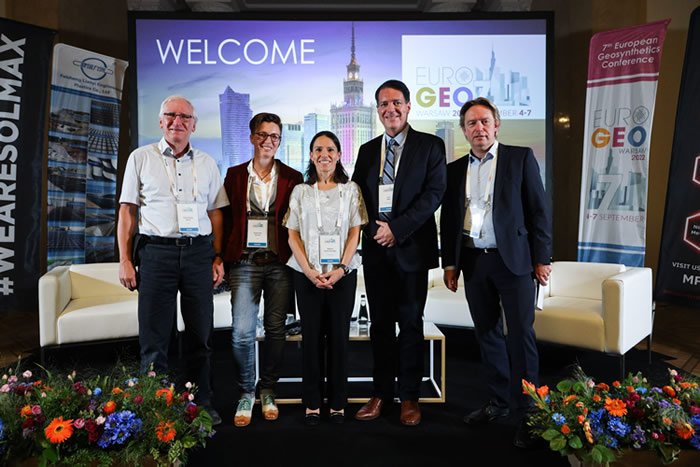A comprehensive look at the latest issues, challenges and wins surrounding geosynthetics and the environment was shared at an IGS Special Session on Sustainability at the EuroGeo 7 conference.

The popular seminar explored European construction legislation, sustainability benefits and concerns, research, and initiatives spearheaded by the IGS to boost awareness of the positive impact of geosynthetics on the environment.
Around 100 attendees heard from four speakers at the talk titled ‘Geosynthetics, sustainability and current industry challenges’, hosted by IGS UK chair Patricia Guerra-Escobar.
Oscar Nieto Sanz, of the European Commission (EC), explained how the EC’s Construction Products Regulation was undergoing revision to ensure greater streamlining and harmonization across the Single Market, address sustainability goals, better support digital transformation in the industry, and help reduce market barriers.
Henning Ehrenberg, of the European Association of Geosynthetic Product Manufacturers, argued sustainability was not possible without geosynthetics in the construction industry. He explained Life Cycle Analysis tests consistently found energy demand and carbon footprint were significantly lower using geosynthetics than traditional construction materials. Plus, overall construction project costs were also reduced, with the high durability of materials increasing service life.
IGS President Sam Allen shared the Society’s numerous and ongoing initiatives promoting the sustainability benefits of geosynthetics, most recently setting up the IGS Sustainability Committee, the creation of the Sustainability eBook which has so far been translated into nine languages, and the ‘Did You Know…?’ education campaign, soon to be available as a series of videos.
Dr. Kasia Zamara highlighted the various challenges facing the geosynthetics/sustainability argument including the existence of incorrect information or misinformation, and the difficulty of linking plastic pollution to their sources. She emphasised the urgency needed to tackle risks to the environment, and how geosynthetics could contribute significantly to reducing the threats.
Finally, Dr. Franz-Georg Simon, of BAM, the Federal Institute for Materials Research and Testing, shared the results of a research project with the Shirshov Institute of Oceanology in Moscow, Russia, and the Latvian Institute for Aquatic Ecology, looking at the impact of geosynthetics in aquatic systems. It concluded proper, stabilized geosynthetics had a service life of more than 100 years, in leaching tests no eco-toxic effects were observed, and plastic on the beach came from the improper application of materials or littering.
IGS Executive Director John Kraus said: “The IGS and industry partners are seeking to place geosynthetics at the centre of sustainability practice, offering low carbon, cost-effective solutions that enhance the resilience and longevity of essential infrastructure needed to meet the Sustainable Development Goals.”
The session, which also included questions from the audience, formed part of the 7th European Geosynthetics Conference held in Warsaw, Poland, between September 4-7.
Access a range of resources on sustainability by visiting the IGS Sustainability web page here.
RFP: Sustainability Benefit Calculator
Could you help advance the sustainability argument? The IGS is looking for bids to help it create a ‘sustainability benefit calculator’ for geosynthetic materials. The web-based tool for design engineers and others aims to offer numerical calculations and estimates of the quantity and value of the benefits of geosynthetics, for example in terms of carbon footprint when compared with older construction methods and materials. For more details and to bid for tender, email IGS Secretariat Manager Elise Oatman at igssec@geosyntheticssociety.org. All bids must be submitted by September 30.





















